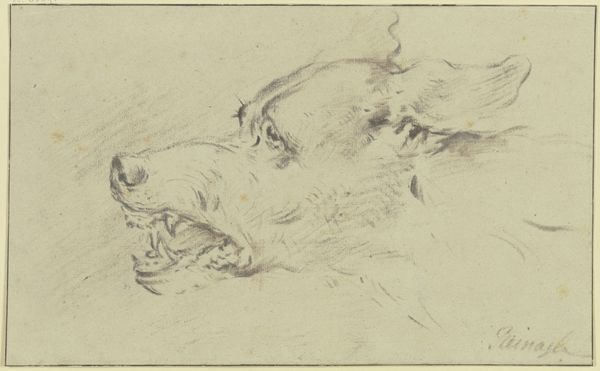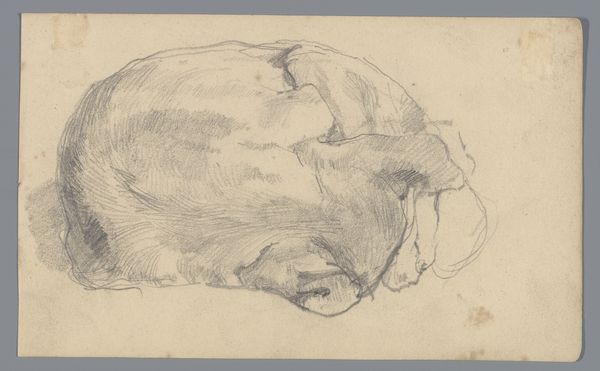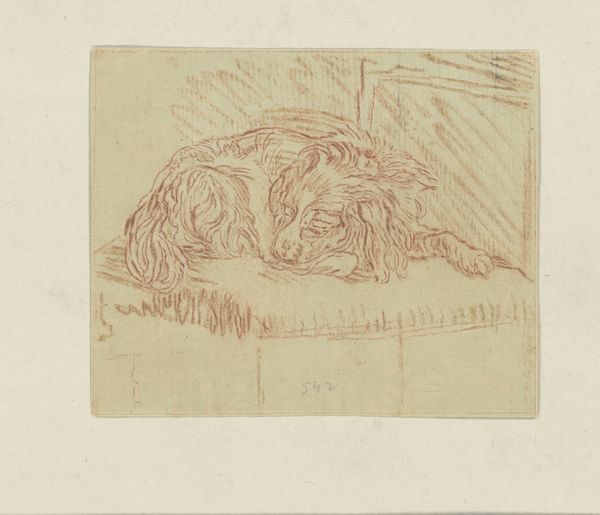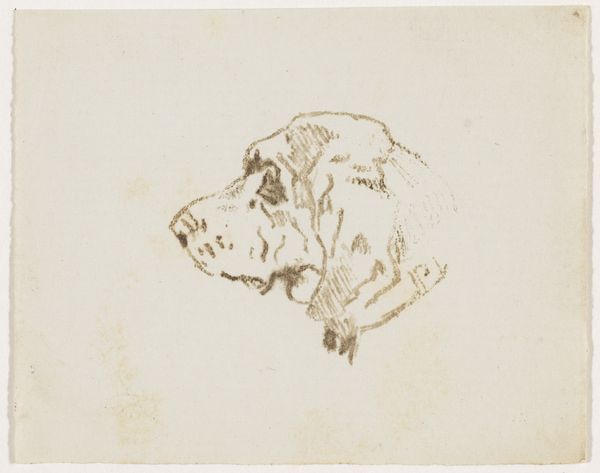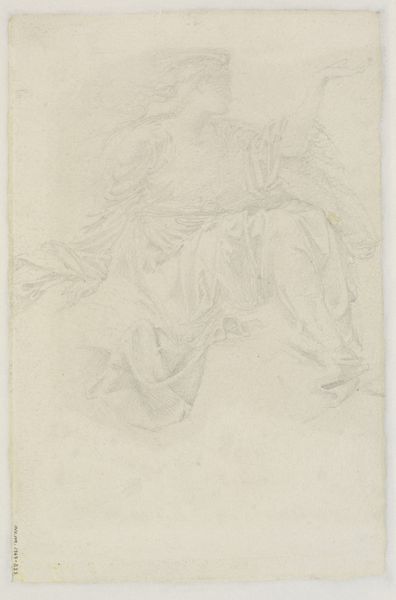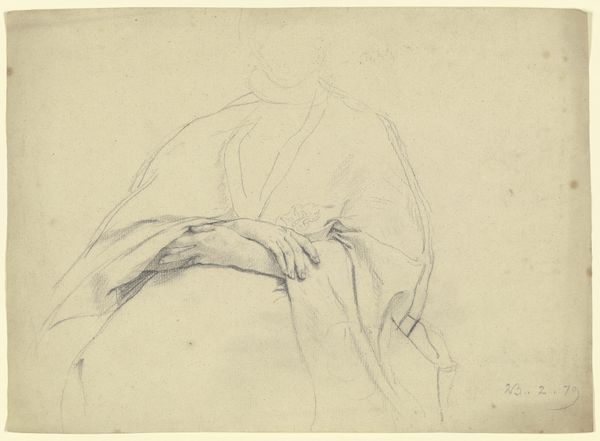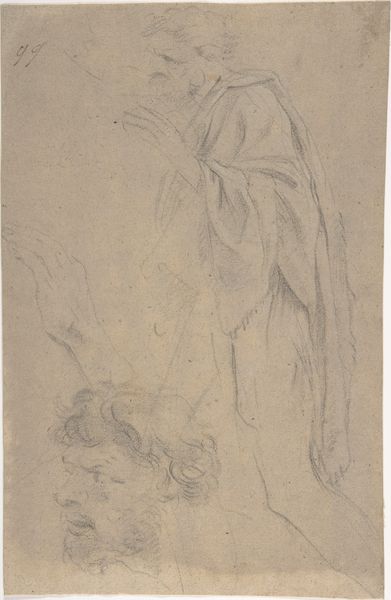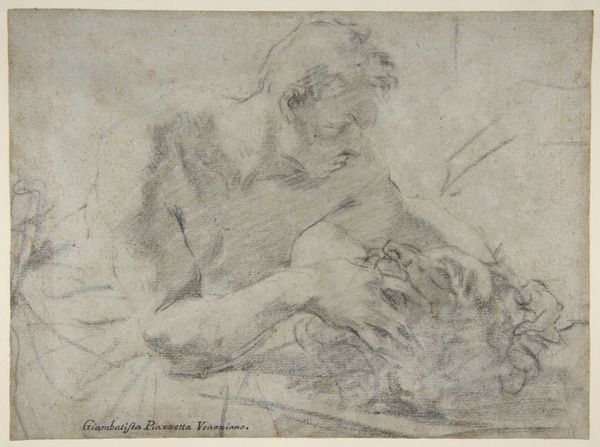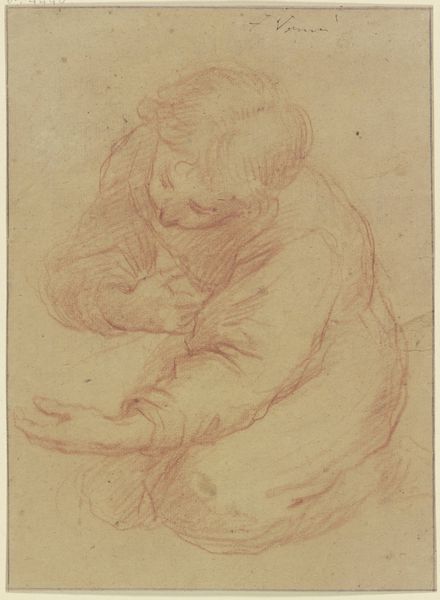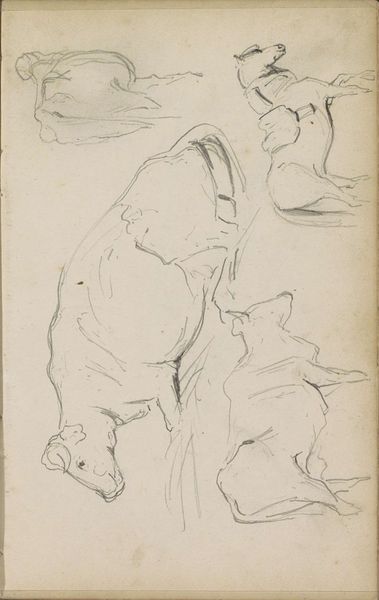
Sich vornüber nach etwas bückender Mann mit Dreispitz c. 1771 - 1772
0:00
0:00
drawing, pencil, chalk
#
portrait
#
drawing
#
pencil sketch
#
figuration
#
pencil
#
chalk
#
15_18th-century
Copyright: Public Domain
This sketch by Georg Melchior Kraus captures a man in mid-bend, his form dominated by the iconic tricorn hat. This hat was not merely a fashion statement; it signified status, military or civil authority, and belonging to a particular social stratum during the 18th century. The act of bending itself, seemingly simple, is laden with potential meanings. Is it humility, servitude, perhaps an act of retrieval? This posture echoes through art history, from religious scenes of supplication to classical depictions of labor. Consider the stooping figures in Millet’s "The Gleaners," sharing a similar downcast physical expression. The hat, however, complicates the narrative. It represents authority, thus creating a tension between social standing and physical action. This tension is a visual language, conveying a sense of societal unease and potential upheaval. The bending figure is a cyclical motif, recurring throughout history and art, evolving with each cultural context, and reminding us of the continuous dance between power, submission, and the human condition.
Comments
No comments
Be the first to comment and join the conversation on the ultimate creative platform.
